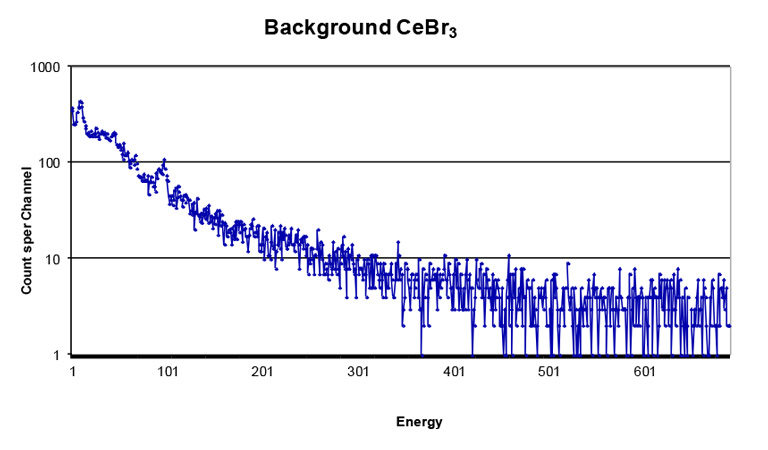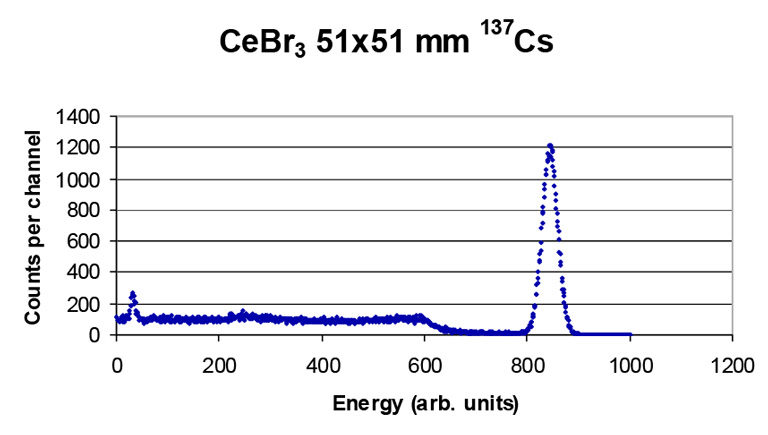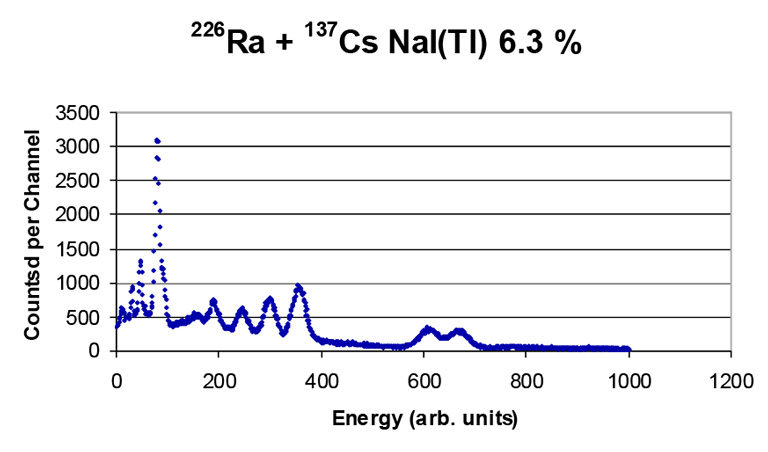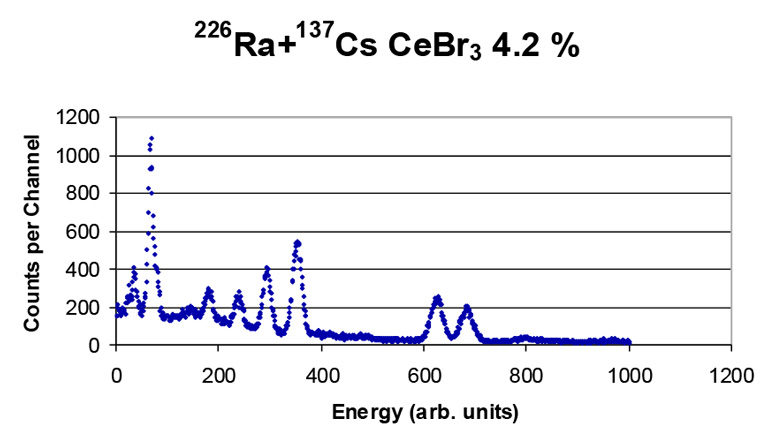Above an energy of 200 keV the resolution is superior to NaI(Tl). It also shows good proportionality of response over the gamma energy range from 122 to 1274 keV*1 and as cerium is an activator for the luminescence process, the crystal does not need any additional doping to aid scintillation, unlike Lanthanum Halides.Furthermore CeBr3 scintillation detectors do not suffer from the intrinsic background (self-activity) typical for Lanthanum Halide detectors like LaCl3:Ce and LaBr3:Ce.
In LaBr3 for example, self-activity is primarily due to 138La that emits conversion electrons and β-particles with energy of up to 1.7 MeV. The self-activity due to 138La in LaBr3 has an intrinsic count-rate of ~1.5 events/(cm3/sec). However, the self-activity of CeBr3 (due to 142Ce that emits β-particles with total energy of 4.5 MeV) is 4×10-4 events/(cm3/sec). Thus, the self-activity of CeBr3 is about 3750 times lower than that in LaBr3.
While self-activity issues are not critical in PET (which relies on coincidence measurements), the negligible self-activity of CeBr3 makes it more attractive in large radionuclide detection and imaging systems required for homeland security applications. In these systems, large detector volumes are required and the expected extrinsic count-rate can be extremely low which requires detectors with very low background.
CeBr3 is well-suited for applications requiring fast response, high count-rates, and good timing resolution. CeBr3 scintillators can also be expected to provide accurate time-of-flight (TOF) information.
- Homeland Security
- Medical Imaging (PET)
- Gamma Spectrometry
- Single Photon Emission Computed Tomography (SPECT)
- Nuclear & Particle Physics Research
- X-Ray Diffraction (Very fast scintillation material)
- NDT – Non Destructive Testing
- Decommissioning & Environmental Monitoring
- Geological & Oil Exploration
- NORM Detection
- Food Contamination Monitoring





